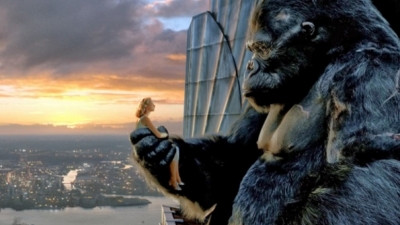
The giant ape King Kong crashes into the jungle clearing to find his female sacrificial victim tied between twin pillars. With one finger he unwinds her bonds, then picks her up and lumbers off, clutching her in his gigantic paw. In fact, for most of this scene in the film King Kong (1933), the ‘monster’ was a model, 18in (460mm) high.
The effect was achieved through a technique called back or rear projection, by beaming film of the ape and background scenery onto the back of a translucent screen, while the actress Fay Wray played her role in front.
The main sang with the system is that the back-projected image tends to look flatter and dimmer than the foreground action. This is because the amount of light penetrating the screen is less than the light illuminating the foreground action.
The system was improved in the 1940s with the development of the triple-head process. it involved one projector shining directly on the rear of the screen and two others on either side bouncing identical images from mirrors so that they were precisely superimposed. This technique produced a brighter picture.
Picture Credit : Google

